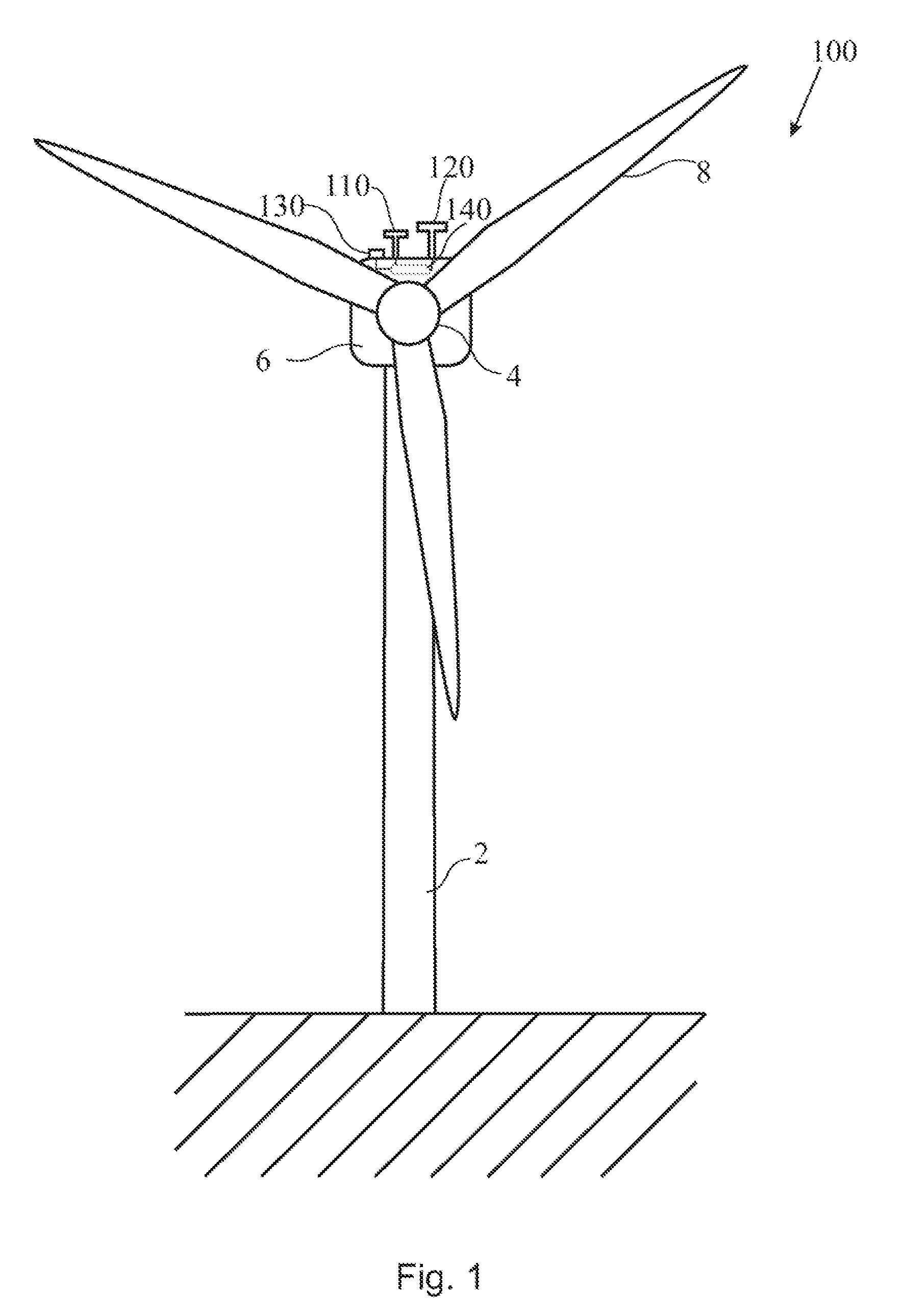Ice detection based on anemometry
a technology of anemometry and ice detection, which is applied in the direction of wind energy generation, volume flow measurement devices, testing/calibration of speed/acceleration/shock measurement devices, etc., can solve the problems of reducing energy output, affecting the performance of wind turbines, and increasing the probability of icing
- Summary
- Abstract
- Description
- Claims
- Application Information
AI Technical Summary
Benefits of technology
Problems solved by technology
Method used
Image
Examples
Embodiment Construction
[0015]Reference will now be made in detail to the various embodiments of the invention, one or more examples of which are illustrated in the figures. Each example is provided by way of explanation of the invention, and is not meant as a limitation of the invention. For example, features illustrated or described as part of one embodiment can be used on or in conjunction with other embodiments to yield yet a further embodiment. It is intended that the present invention includes such modifications and variations.
[0016]Under certain atmospheric conditions, ice will develop on the turbine components, for example, the anemometers and the blades. The commonly used ice sensor does not provide sufficient accuracy. The inability to detect ice with a desired accuracy may lead to ice-throw from the turbine blades and, as a result, the wind turbine may need to be shut down below a certain temperature.
[0017]FIG. 1 illustrates an embodiment wherein the system for ice detection is provided on a win...
PUM
 Login to View More
Login to View More Abstract
Description
Claims
Application Information
 Login to View More
Login to View More - R&D
- Intellectual Property
- Life Sciences
- Materials
- Tech Scout
- Unparalleled Data Quality
- Higher Quality Content
- 60% Fewer Hallucinations
Browse by: Latest US Patents, China's latest patents, Technical Efficacy Thesaurus, Application Domain, Technology Topic, Popular Technical Reports.
© 2025 PatSnap. All rights reserved.Legal|Privacy policy|Modern Slavery Act Transparency Statement|Sitemap|About US| Contact US: help@patsnap.com



